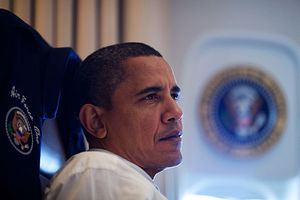It’s a week for summit diplomacy in Asia, with leaders’ meetings both in the Philippines, for the Asia-Pacific Economic Cooperation (APEC) summit from November 18-19 and then in Malaysia for the ASEAN and East Asia Summits. The result of these gatherings of top regional leaders means a time for diplomatic focus on areas of concern – and in the Asian context, that means a heavy emphasis on the South China Sea disputes.
China has already made its position clear that APEC, at least, is not a proper place for discussing the South China Sea disputes. During a trip to Manila, Chinese Foreign Minister Wang Yi carried the message that China did not want the maritime disputes, involving overlapping claims from Brunei, China, Malaysia, the Philippines, Taiwan, and Vietnam, on the agenda. Philippine officials have said they would not raise the issue themselves, but would not prevent others from doing so.
The United States, at least, seems determined to put the issue at least on participants’ minds, even if it doesn’t appear in any formal declarations. National Security Advisor Susan Rice told reporters last week that the South China Sea “will be a central issue of discussion, both at the East Asia Summit as well as the ASEAN-U.S. Summit and the other engagements that we have throughout our visit to Asia.”
It didn’t take long to make that promise a reality. After arriving in Manila, President Barack Obama toured the flagship of the Philippine navy, the BRP Gregorio del Pilar – which also happens to be a former U.S. Coast Guard vessel. Obama pointed to the ship as a symbol of U.S.-Philippine maritime cooperation.
“My visit here underscores our shared commitment to the security of the waters of this region and to the freedom of navigation,” Obama said just after touring the Gregorio del Pilar. He also announced the transfer of two additional vessels to the Philippine Navy: “a research vessel to help map its territorial waters, and another U.S. Coast Guard cutter to bolster the Navy’s ability to conduct long-endurance patrols.” While Obama didn’t specifically mention the South China Sea disputes, that’s the context in which U.S. officials most often raise concerns about freedom of navigation, and the reason Washington is so keen to boost maritime capabilities in its allies and regional partners.
Obama also raised the South China Sea disputes in a meeting with Australian Prime Minister Malcolm Turnbull, saying that its “very important for us simply to uphold the basic principle that these issues should be resolved by international norms and rule of law, and peacefully settled.”
Tomorrow, when Obama meets with Philippine President Benigno Aquino III, the disputes will also be at the forefront of the agenda. Obama is likely to repeat the security assurances he made in his remarks on Tuesday, when he spoke of Washington’s “ironclad commitment to the defense of our ally the Philippines.”
The United States is not alone in bringing up the South China Sea disputes. Japanese Prime Minister Shinzo Abe has also been discussing the issue at bilateral meetings, including those on the sidelines of the G20 summit in Turkey earlier this week. During bilateral meetings with prime ministers of the Netherlands and Australia, Abe made sure to mention his hope for deeper cooperation to ensure respect for the “rule of law” and freedom of navigation in East Asia.
China, meanwhile, is playing defense on the issue. Vice Foreign Minister Liu Zhenmin told reporters on Tuesday that China wants the summits to focus on promoting economic growth, rather than the South China Sea disputes. But he also acknowledged this is unlikely to happen: “Although we don’t want to see the South China Sea issue became a hot topic at the summit, it is unavoidable that some countries may take up the matter,” Liu said, according to Xinhua.
Liu also portrayed China as the victim of the disputes, saying other countries had illegally seized islands and features in the Spratlys that rightfully belong to China. He said China has shown “great restraint” by not retaking the features in question. “The Chinese government has the right and the ability to recover the islands and reefs illegally occupied by neighboring countries,” Liu said. “But we haven’t done this.” Liu also repeated China’s defense of its construction in the South China Sea, saying it was primarily for civilian purposes – but also necessary for national security, as “some countries [are] making a show of force in the area.”
China’s Foreign Ministry responded particularly sharply to Japan’s interest in the issue. Spokesperson Hong Lei said on Tuesday that China was “dissatisfied” with Abe’s frequent references to the disputes, and accused Japan of “hyping up” the disputes. “We urge the Japanese side to stop making groundless accusations on the South China Sea issue,” Hong said.

































